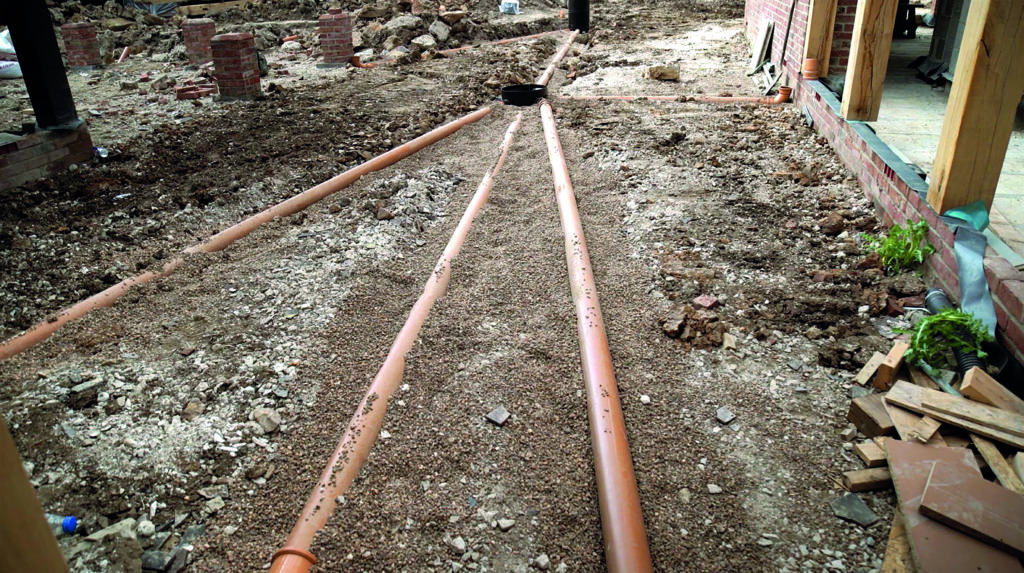
As pressure increases to use brownfield sites for new housing, the specialist skills involved in assessing the risks that contaminants pose to the quality of the water entering the surface water drainage and foul water sewerage system from the surrounding soil, is vitally important to house developers and water companies. The BPF Pipes Group has prepared a new guide “Designing drains and sewers for brownfield sites” providing drainage engineers with clear advice on choosing a pipe which will be fit for the long term, starting with the information available to them from the investigation of potentially contaminated land and drawing on the materials expertise from pipe manufacturers.
Effect of contaminants on ingress
An initial flow diagram in the guide sets out a step-by-step process for the drainage engineer to identify if a quantitative risk assessment has been carried out, whether the contaminants could pose a risk if left in the ground and whether the source or the pathway might be removed due to the proposed remediation plans.
The geotechnical specialist undertaking the quantitative risk assessment and options appraisal can support the drainage engineer by drawing out the essential information from the site history and soil sampling:
• confirming where there is (and is not) a possible source of contamination – this is particularly pertinent on large sites with a mixed history of use;
• clearly setting out what chemicals are present from the many included in the test report and in which zones (areas) of the site; and
• explaining the mitigation strategies proposed so that any impact on the source of contamination or the pathway can be recognised.
Suitability of materials for drains and sewers
A second flow diagram in the guide assists the engineer to identify the impact that residual contaminants may have on plastic pipe materials.
Where organic compounds are shown to be present in the soil, the guidance provides limits for PAH, BTEX and TPH which represent a safe level with respect to long-term performance of polypropylene, polyethylene and PVC-U pipes. The engineer is again reminded that any remediation activities which might remove the source of the contamination or the pathway to the drainage or sewerage system would render these limits superfluous.
Working together
The BPF Pipes Group guide provides practical assistance on designing drains and sewers for brownfield sites.
However, to be truly useful to the drainage engineer, it requires that a risk assessment has been completed, an options appraisal has been carried out to identify solutions, and that the geotechnical specialist provides information in a form which can readily be used in the decision-making process.
Working together, clear and targeted information can be offered, ensuring the longevity of the surface water drainage and foul sewerage networks on brownfield sites.
The guide is available on its website at www.bpfpipesgroup.com/support-downloads/guidance-notes.
Article contributed by the British Plastics Federation Pipes Group